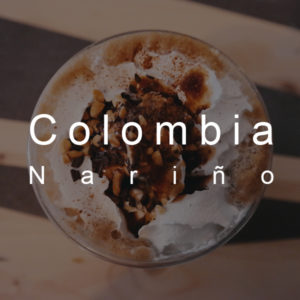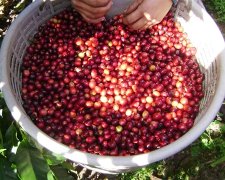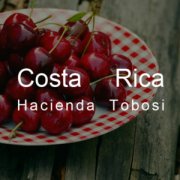The main supplier of Starbucks Coffee-introduction of Columbia Linglong Narino producing area

For professional baristas, please follow the coffee workshop (Wechat official account cafe_style)
Colombia is currently the third largest coffee producer in the world, after Brazil and Vietnam. It first planted commercial beans in the 1830s. In the 20th century, coffee accounted for the largest export crop. The mountainous terrain, coupled with a variety of tropical microclimate, provides an ideal planting environment. 75% of the total output is sold abroad, making it the most important source of foreign exchange earnings. Traditionally ripe coffee cherries are washed with water. In the past 15 years, the Coffee Research Center in Colombia has developed a system to protect the ecological environment, which requires little water treatment, which can reduce water pollution by 90% and reduce water consumption by 95%. This treatment can not only effectively maintain the ecology, but also improve the quality. Small farms sprinkle shelled coffee beans on the flat roof of their homes and bask in the sun. Colombia has a good climate and a large temperature difference, and from a regional point of view, it produces almost all the year round. The main harvest time is from October of each year to February of the following year, and November and December are harvest periods. The main varieties include Kaddura Caturra, Columbia Colombia, Tibica Tipica, Bourbon Bourbon, Elephant Bean Maragogype, and Tabi. Farms and cooperatives across the country, big or small, are distributed in more than 500000 towns and 14 major coffee producing areas-including Nalinglong Nari ñ o, Cauca in Cauca, Meta in Meita, Huila in Uila, Tolima in Tolima, Quindio in Kindio, Caldas in Caldas, Risaralda in Lisalda. Antioquia in Antioquia, Valle in Valley, Cundinamarca in Cundinamarca, Boyac á in Boyaca, Santander in Santander and Norte de Santander in North Santander. A total of 2 million Colombians depend on coffee cultivation for a living, contributing 12.5 per cent to local agricultural gross domestic product (GDP).
Nalinglong Nari ñ o is located in the western corner of Colombia, which is the highest region in Colombia. Coffee grows on the alpine slopes facing the sea in the west. This area is the main supplier of Starbucks coffee. Only the coffee beans at the top of small farms have a chance to flow out. With the reputation of the Pope's Holy Grail, we choose the selected beans of very small farms in the Nalinglong region, which independently produce coffee beans prepared exclusively for Europe.
The Nalinglong producing area is located on the west bank of Colombia, which is the highest elevation in the country. Limited by the topographical environment, the scale of local coffee farmers is very small, picking ripe coffee cherries by hand. The selected batch of small farmers are close to the town of La Union, and as the producing area is not far from the El Galeras volcano, volcanic geology provides rich soil nutrients, making Nalinglong a first-and second-class producer of high-quality coffee in Colombia. Across the northern and southern hemispheres of Colombia, most of the harvest period is twice a year, but Nalinglong, which is located in the south, has only one harvest a year in spring and summer, and the overall yield is significantly lower than that of Huila, which is also a well-known producing area in the south. Small farmers deal with Figue during the non-coffee season.
Colombian coffee is classified mainly according to the size of raw beans, 16-18 is called Supremo,14~16 as Excelso, less than 14 is divided into Usual Good Quality, this batch belongs to the batch of Excelso, but the size of coffee particles is not the only standard to determine the quality of coffee. Colombian coffee is always popular for its well-balanced taste and bright and active acidity, while coffee from Nalinglong is famous for its strong aroma and sweetness.
Flavor:
The palate is mellow and smooth, with strong fruit aromas and sweet fruit flavors.
If you like light baking, you can taste her bright acidity, fruity and sweetness.
Farm owner: Smallholder farmers from Alto del Obispo
Producing area: Nari ñ o
Country: Colombia
Altitude: 1750 m
Certification: None
Variety: Caturra
Treatment: fully washed and dried on the patio
Flowering: September to December
Harvest time: March to July
Appearance: 18 eyes
Important Notice :
前街咖啡 FrontStreet Coffee has moved to new addredd:
FrontStreet Coffee Address: 315,Donghua East Road,GuangZhou
Tel:020 38364473
- Prev

Introduction to Kuma Mill of Cesar Cubs processing Farm in Magdalena District of Madalina, Colombia
For the exchange of professional baristas, please follow the Coffee Workshop (Wechat official account cafe_style) Columbia Cesar Majagua Tipica Washed. To the west of Colombia is the Andes, divided into three parts: the western, central and eastern mountains. The Cauca and Magdalena rivers flow along the Caribbean to the lowland plains. Colombia is currently the second largest coffee maker in the world.
- Next

Costa Rica Torbush Manor Tobosi&Copey Manor Information Vera Rob Villalobos
Professional baristas please follow the coffee workshop (Wechat official account cafe_style) Tobosi was born in 2010, to provide high-quality boutique coffee, with the goal of becoming a leader in the supply of boutique coffee. Strive to produce products in an open and transparent system and have a complete track record to ensure that customers can get the best products. The one provided
Related
- Detailed explanation of Jadeite planting Land in Panamanian Jadeite Manor introduction to the grading system of Jadeite competitive bidding, Red bid, Green bid and Rose Summer
- Story of Coffee planting in Brenka region of Costa Rica Stonehenge Manor anaerobic heavy honey treatment of flavor mouth
- What's on the barrel of Blue Mountain Coffee beans?
- Can American coffee also pull flowers? How to use hot American style to pull out a good-looking pattern?
- Can you make a cold extract with coffee beans? What is the right proportion for cold-extracted coffee formula?
- Indonesian PWN Gold Mandrine Coffee Origin Features Flavor How to Chong? Mandolin coffee is American.
- A brief introduction to the flavor characteristics of Brazilian yellow bourbon coffee beans
- What is the effect of different water quality on the flavor of cold-extracted coffee? What kind of water is best for brewing coffee?
- Why do you think of Rose Summer whenever you mention Panamanian coffee?
- Introduction to the characteristics of authentic blue mountain coffee bean producing areas? What is the CIB Coffee Authority in Jamaica?

